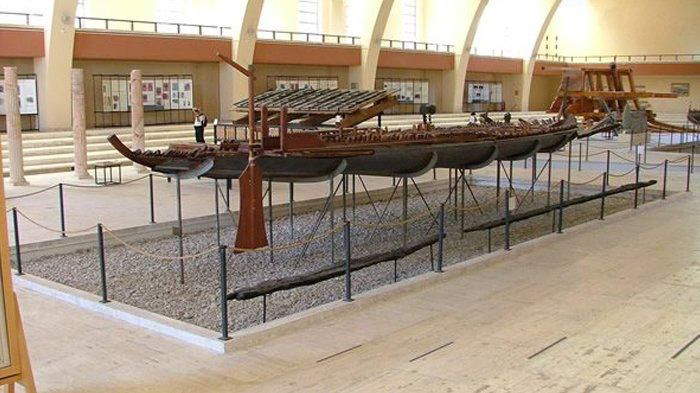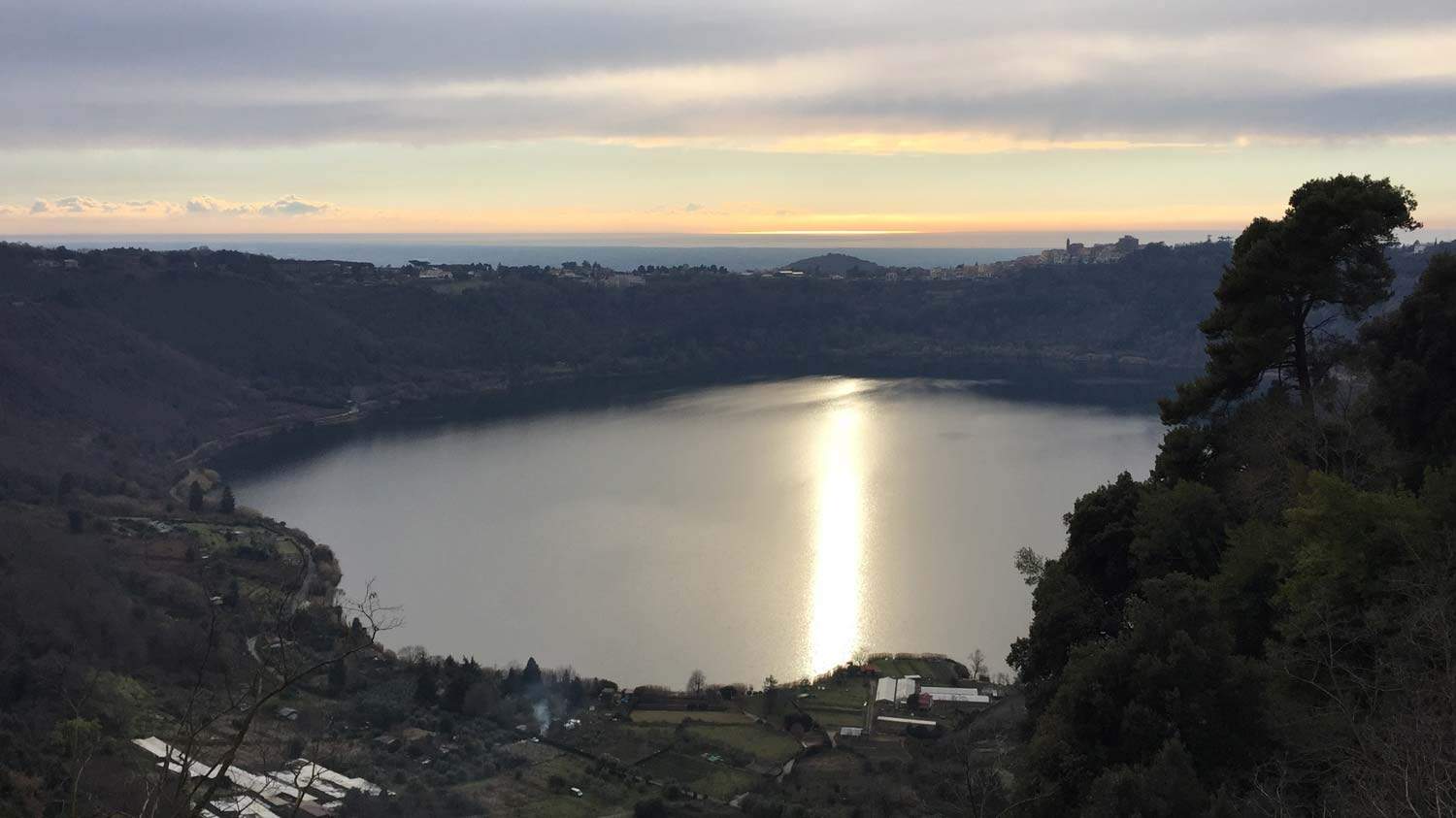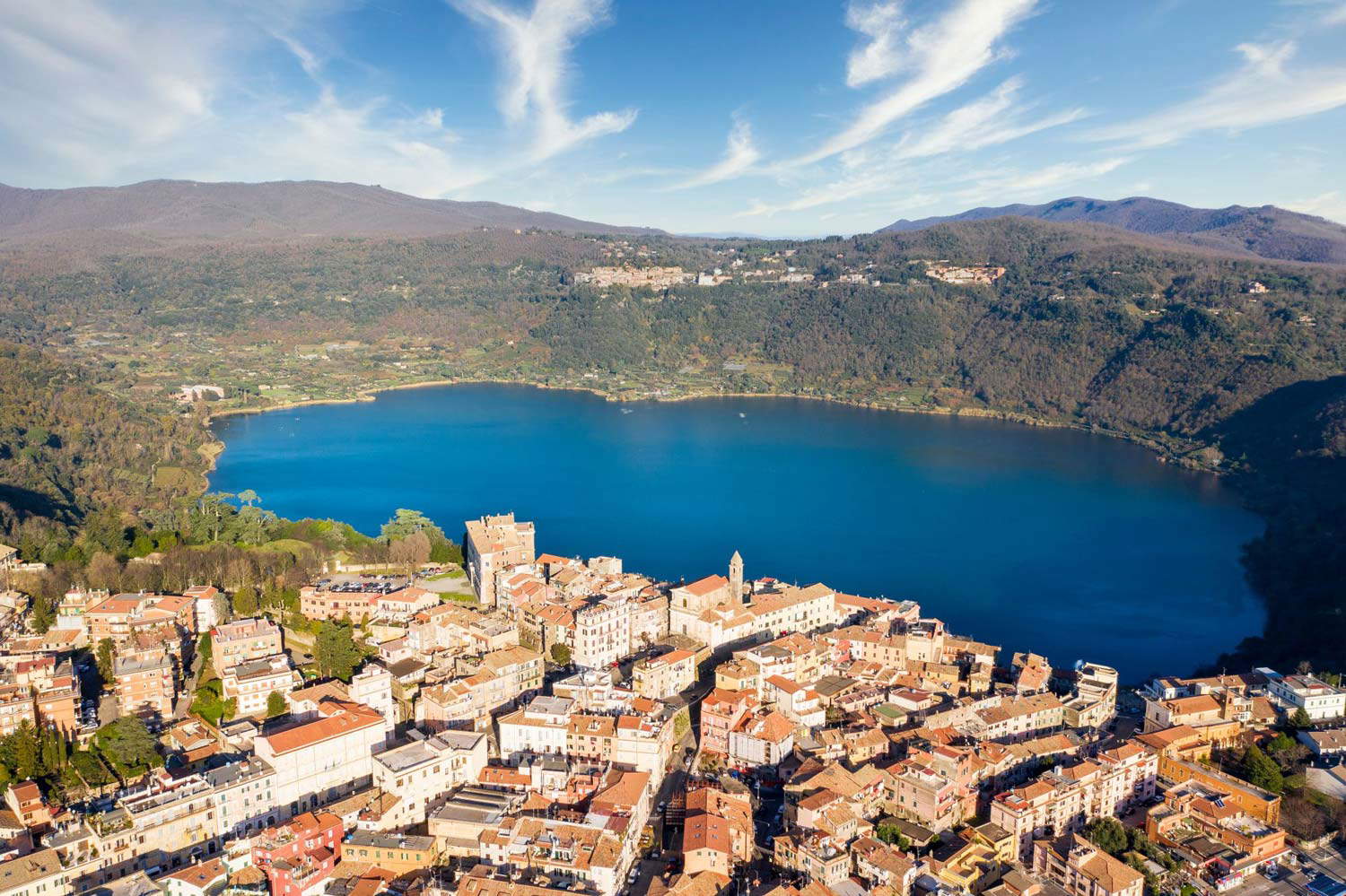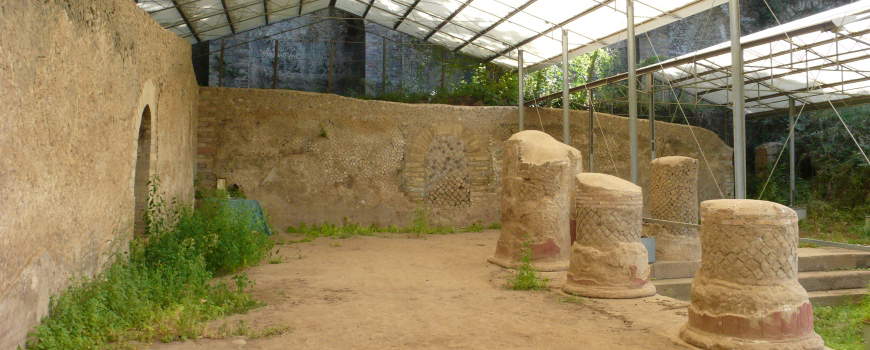Lake Nemi, what to see: 5-step itinerary
Lake Nemi has been a splendid resort since the time ofancient Rome. Easily accessible from the capital, Lake Nemi is a volcanic lake with characteristics similar to those of Lake Albano compared to which it is considerably smaller. Geologically speaking, it is part of the area known as the Colli Albani volcanic complex and even today it is distinguished by the beauty of its waters, which are entirely swimmable, but also by the evocative environment in which it is immersed, not to mention the many traces of its long history with which its shores are strewn. During antiquity in the vicinity of the lake there was a forest and a place of worship dedicated to the goddess Diana, and it is from this that Nemi takes its name. Even today, Lake Nemi is a must-see destination for a vacation of relaxation, culture and good food. Among the crystal-clear waters of Lake Nemi, the museums and the many archaeological sites of this rich territory, on the other hand, one cannot forget the many typical dishes of Latium cuisine that can be tasted in the restaurants that are scattered around the town of Nemi and throughout the surrounding area and, last but not least, the tasty strawberries, which are celebrated every year in June with the festival of the same name. Here are five must-see stops on your trip to Lake Nemi.
1. The Museum of Roman Ships in Nemi.
Since ancient times, Lake Nemi has been the subject of a legend concerning two fabulous ships of gigantic size, built in Roman times, full of pageantry and possibly containing treasures, that were allegedly buried at the bottom of the lake for mysterious reasons. Such a legend began circulating probably as early as the 1st century A.D. and then throughout the Middle Ages, credited from time to time by the occasional discovery of strange artifacts by fishermen on the lake. The two ships, 70 meters long and more than 25 meters wide, had in fact been built by Emperor Caligula in honor of the Egyptian goddess Isis and the local goddess Diana, protector of the hunt. The product of advanced engineering and splendidly decorated, Caligula used them as floating palaces in which to dwell or pause on the lake, or with which to simulate naval battles, but following his death in 41 A.D. the Senate of Rome to erase his memory had all of Caligula’s works destroyed, including the Nemi ships that were sunk. Restored to light, these have been housed since the 1930s in a large museum built specifically to house them. The two large hulls were unfortunately destroyed during a fire in 1944, but today it is still possible to appreciate their grandeur inside the Museum of Roman Ships. The museum has a wing dedicated to the ships, of which some materials are on display, such as a reconstruction of the roof with bronze tiles, two anchors, the lining of the bow wheel, and some original or reconstructed shipboard equipment. Two 1:5 scale models of the ships and much more are also on display. Another wing, on the other hand, is devoted to the peopling of the Albanian territory in the Republican and Imperial periods, with special emphasis on places of worship

2. Nemi
In the heart of the Alban Hills, Nemi is one of the symbolic places of the Castelli Romani area and preserves a timeless charm among its alleys, squares and characteristic and evocative views. Crossed by the Via Francigena and always a destination for pilgrims and travelers, Nemi is much more than its splendid lake. The charm of Nemi is well understood by walking through its ancient streets over which dominates the tower that, like the picturesque houses, is reflected in the waters of the lake. The charm of this village of ancient origins with the tower and the houses that are reflected in the blue waters of the lake, surrounded by reeds and strawberry greenhouses, has enchanted poets and painters over the years, just as it now fascinates the many tourists who constantly visit it. Add to this the fact that all the streets of Nemi are pervaded by the scent of the famous little strawberries, which, among the small stores and pastry stores in the center, can be enjoyed in a thousand ways: from ice cream to pastries and then again in sweets and drinks. Absolutely unmissable then is the experience of walking under the foliage of the forest that embraces the town. Considered sacred since Roman times, the forest housed the temple of Diana Nemorense, the religious and political center of the Latin League, of which a wall of large niches, part of the pronaos with at least one votive altar, and a few columns are visible today.

3. Genzano di Roma
Genzano di Roma is a small jewel set on the outer slope of the volcanic crater of Lake Nemi. The heart of Genzano di Roma is its well-preserved medieval village, considered by many to be one of the most beautiful in the entire Castelli Romani area. Dominating this intricate maze of alleys and alleyways are two large monumental buildings: palazzo Sforza Cesarini as an expression of the power of the barony of the lords of Genzano, and the church of Santa Maria della Cima, evidence of ancient religious power. Around and in the midst of these two symbols of Genzano di Roma are many terraced medieval houses overlooking the lake while one can still see the remains of a double wall enclosure connected by towers, which surrounded the castrum. A visit to the Sforza Cesarini park is then a must: a true tribute to love. Built by Duke Lorenzo Sforza Cesarini for his English wife Carolina Shirley, it offers a romantic walk among local and exotic plant essences, such as Atlantic cedars and redwoods, along with holm oaks, black hornbeams, and laurels that in the past attracted many artists on the Grand Tour of the 19th century.

4. The Temple of Diana.
Tangible traces of ancient Nemi are the remains of the Temple of Diana. In this area the first noteworthy find dates as far back as the 16th century when a dedication to Diana-Vesta came to light that is now in the Capitoline Museums in Rome. From the 1700s, on the other hand, the first archaeological campaigns would begin, bringing to light numerous votive materials, the semicircular niches and the sacred enclosure. Throughout the 18th and 19th centuries, the entire area of the sanctuary was subject to continuous excavations and research that completely dismembered the considerable heritage that had come to light with some of the unearthed materials now owned by the State Museum of Copenhagen, the City of Palma de Mallorca, the Museum of Nottingham, the National Archaeological Museum of Villa Giulia in Rome, and the Museum of the University of Philadelphia. According to scholars the area of the sanctuary, frequented as early as the Middle Bronze Age took on a strong political significance in Archaic times, as it became the federal center of the united Latin cities. The present appearance of the complex, on the other hand, would be dated to the end of the 2nd century B.C. when it assumed a monumental and scenic layout.

5. The Lovers’ Terrace
A must-see during your stay on Lake Nemi is the Lovers’ Terrace, a lovely spot from which to enjoy a breathtaking view of the lake’s clear waters. Opened on Valentine’s Day 2015, the Lovers’ Terrace is named after the mythological loves of the lake valley, particularly those between Diana and Virbius and between Numa Pompilius and the nymph Egeria. Amidst legends and traditions rooted in the mists of time, today the Lovers’ Terrace is one of Nemi’s main attractions that attracts many visitors in every season. From the terrace, nestled between the lake, the village and the lush nature of the Albani hills, you can let your eye run far away, but you can mostly relax in the many restaurants in the area where you can enjoy, in an absolutely romantic setting, not only many specialties based on the ever-present strawberries, but also typical dishes of the rich Lazio cuisine.

 |
| Lake Nemi, what to see: 5-step itinerary |
Warning: the translation into English of the original Italian article was created using automatic tools. We undertake to review all articles, but we do not guarantee the total absence of inaccuracies in the translation due to the program. You can find the original by clicking on the ITA button. If you find any mistake,please contact us.



























